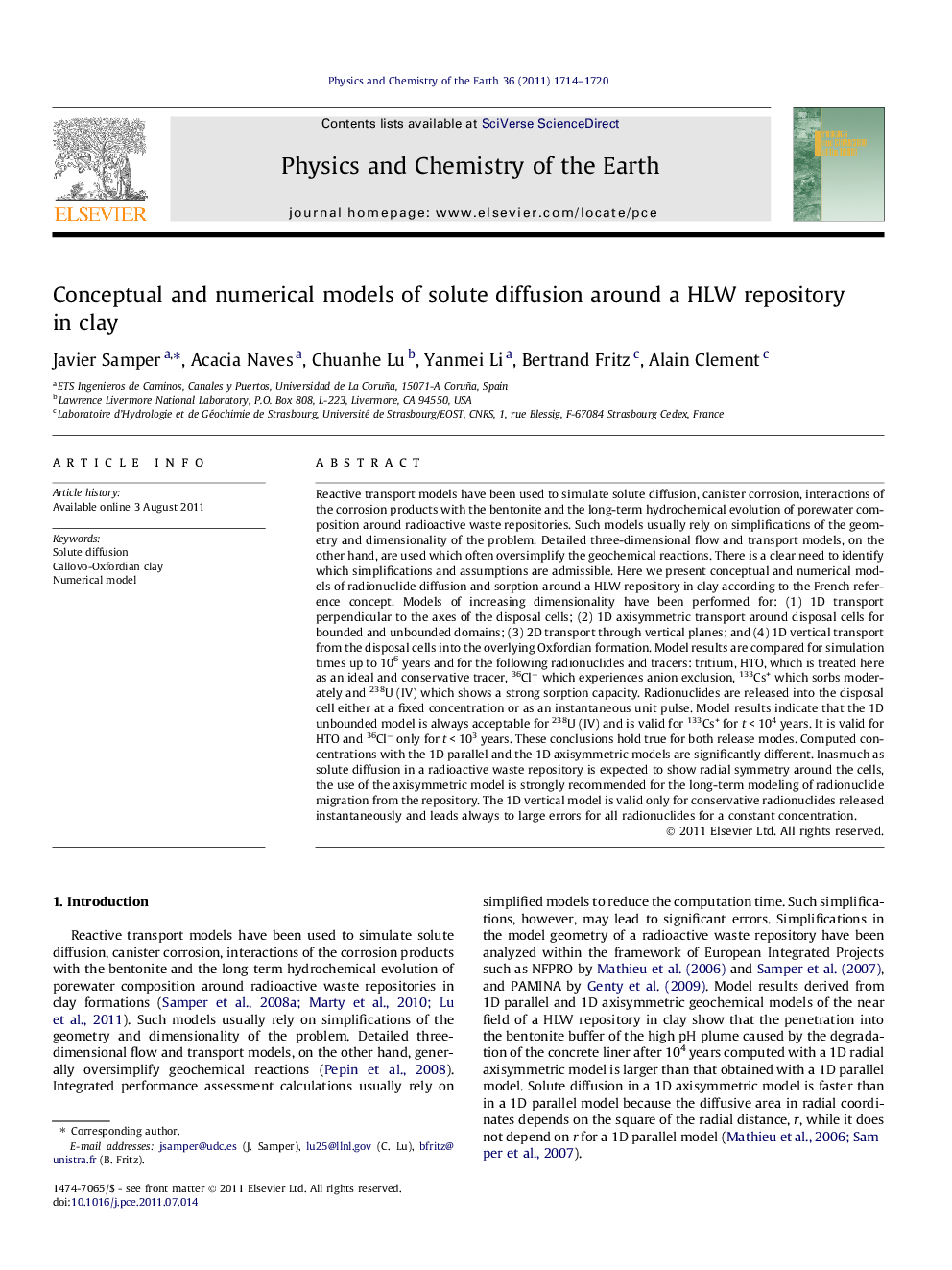| کد مقاله | کد نشریه | سال انتشار | مقاله انگلیسی | نسخه تمام متن |
|---|---|---|---|---|
| 4721252 | 1639372 | 2011 | 7 صفحه PDF | دانلود رایگان |

Reactive transport models have been used to simulate solute diffusion, canister corrosion, interactions of the corrosion products with the bentonite and the long-term hydrochemical evolution of porewater composition around radioactive waste repositories. Such models usually rely on simplifications of the geometry and dimensionality of the problem. Detailed three-dimensional flow and transport models, on the other hand, are used which often oversimplify the geochemical reactions. There is a clear need to identify which simplifications and assumptions are admissible. Here we present conceptual and numerical models of radionuclide diffusion and sorption around a HLW repository in clay according to the French reference concept. Models of increasing dimensionality have been performed for: (1) 1D transport perpendicular to the axes of the disposal cells; (2) 1D axisymmetric transport around disposal cells for bounded and unbounded domains; (3) 2D transport through vertical planes; and (4) 1D vertical transport from the disposal cells into the overlying Oxfordian formation. Model results are compared for simulation times up to 106 years and for the following radionuclides and tracers: tritium, HTO, which is treated here as an ideal and conservative tracer, 36Cl− which experiences anion exclusion, 133Cs+ which sorbs moderately and 238U (IV) which shows a strong sorption capacity. Radionuclides are released into the disposal cell either at a fixed concentration or as an instantaneous unit pulse. Model results indicate that the 1D unbounded model is always acceptable for 238U (IV) and is valid for 133Cs+ for t < 104 years. It is valid for HTO and 36Cl− only for t < 103 years. These conclusions hold true for both release modes. Computed concentrations with the 1D parallel and the 1D axisymmetric models are significantly different. Inasmuch as solute diffusion in a radioactive waste repository is expected to show radial symmetry around the cells, the use of the axisymmetric model is strongly recommended for the long-term modeling of radionuclide migration from the repository. The 1D vertical model is valid only for conservative radionuclides released instantaneously and leads always to large errors for all radionuclides for a constant concentration.
► We present radionuclide diffusion and sorption models for a repository in clay.
► We compare models of increasing complexity.
► We test the validity of the simple 1D models.
► We provide time ranges for the validity of simple models.
Journal: Physics and Chemistry of the Earth, Parts A/B/C - Volume 36, Issues 17–18, 2011, Pages 1714–1720